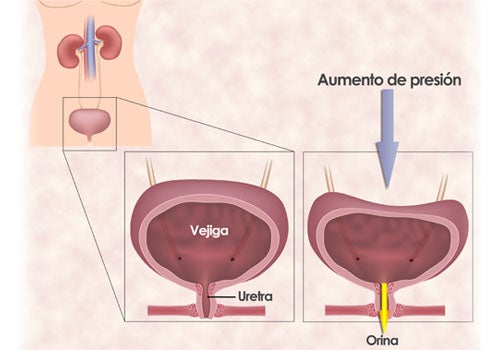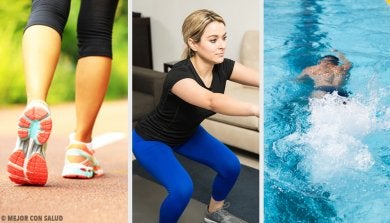Exercises For Urinary Incontinence For Women

We can take advantage of any time of the day to practice these exercises. In this way, we will also associate them and incorporate them into our daily routine.

Urinary incontinence or involuntary loss of urine is a health problem that affects 30% of adult women and causes great concern and discomfort to those who suffer from it.
It is important to know that in most cases this problem depends on a problem with the muscles of the pelvic area and that this can be worked to re-tone and function properly.
Risk factors for urinary incontinence

The muscles of the pelvic area go from the pubis to the sacrum and are a support for the genital organs, the bladder and the rectum. Like all muscles, with the passage of time, tensions and these previous factors weaken and require exercise to stay flexible and toned.
According to a 2006 study, there are also some factors that contribute to urinary incontinence, and that we should treat naturally:
- Consuming bladder irritants, such as caffeine or alcohol.
- Constipation: this condition makes us strain all the pelvic muscles on a daily basis, so improving bowel function will be a priority.
- Obesity: being overweight could contribute to making incontinence worse.
- Menopause: hormonal changes could cause the loss of flexibility of the muscles
- Pregnancy and vaginal delivery: the weight of the fetus in the womb and the passage of the child through the vagina during delivery temporarily weaken the muscles. If the exercises are carried out correctly and no sudden exercises are done during the postpartum period, the function of the muscles can be recovered correctly.
- Stress: Just as it can make other conditions worse, it could also be harmful to pelvic health.
What are exercises to prevent urinary incontinence?

- The first step is to learn to control the contraction of the muscles in the genital area, imitating the gesture we make when going to evacuate. The famous Kegel exercises are performed for them.
- We can carry out the contraction, feeling in detail how the muscles act and, however, not tensing other areas of the body, such as the abdomen or buttocks.
- During the contraction we will breathe deeply, without holding our breath. This is the basis of the exercises.
Note : When we go to the toilet to urinate, some of the time we will stop the stream of urine. Then we will relax the muscles again and we will continue urinating. We will do this only once, to check which muscles are working. However, we will not repeat it later, as it could be harmful.
How are they made?
- First, slowly contract your muscles until you reach the maximum we can squeeze. We will hold at that point for 5 seconds and then we will relax.
- Then we will repeat this 10 times in a row. In addition, we will do this exercise throughout the day, preferably three times.
- Then, when we have more practice, we can do it more quickly, contracting and relaxing continuously.
- Finally, as the days go by, we will progressively increase to 20 contractions.
Where do we make them?

We will repeat this exercise continuously, since we can also take advantage of many moments to practice it. What’s more, we should associate the exercises with one of our daily activities, while we are waiting or watching television.
The exercises can be practiced in any posture : standing, lying down, sitting, or kneeling. If we perform these exercises daily we could get to notice improvement in a month and a half.









